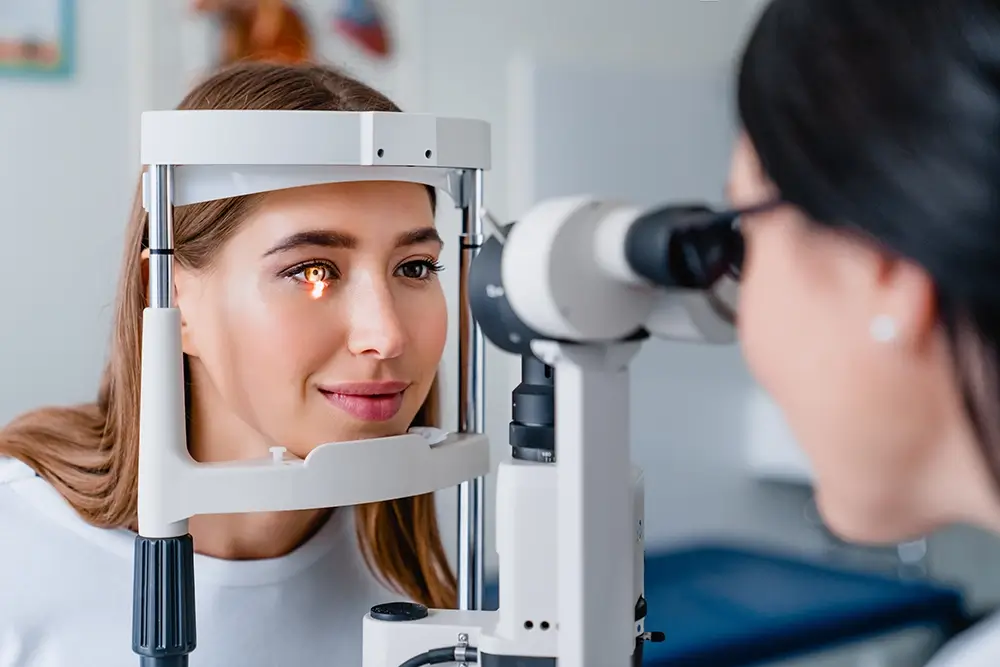Ophthalmology medical device development: Innovative advances in vision care
Ophthalmology medical device development: Innovative advances in vision care
Dr. Lisa Moore, Executive Director, Medical Device and Diagnostics Development
Brian Guthrie, MBA, Associate Director, Strategic Delivery and Growth
Vision is often considered one of the most important senses. Little wonder, then, that significant advances in both diagnostic and therapeutic vision treatments are being provided through innovative medical devices. Speeding global approval and access to these devices is of critical importance as many of the conditions they treat are progressive in nature. At Fortrea, we have teams experienced in both ophthalmology and in medical device development and a deep bench of experience in designing and delivering clinical trials in this important therapy area.
A vision for the future
Myopia is a progressive disease that is increasing in incidence globally. Projections now indicate that by 2050, 49,8 % of the population will suffer from myopia.1 Uncorrected high myopia is the second most common cause of blindness in the elderly. In some countries, for instance, in China and Japan, myopia-related sequelae, such as myopic macular degeneration and retinal detachments, have become the leading cause of blindness.2
The incidence and disease progression in young children is also increasing in the Asia-Pacific region.1 At the forefront of myopia intervention are clinical studies using defocus or dual focus lenses (spectacles and contact lenses) to slow progression of the disease in children. Since early childhood is where the most myopic eye growth occurs, providing options for disease control are a key focus.3 While these studies are still underway to assess durability and long-term reduction in changes to vision, the evidence from several trials is very promising.
Early detection of debilitating retinal diseases such as diabetic retinopathy and macular degeneration suffers from a lack of screening and diagnostic tools in the hands of the primary care providers. This is compounded by a lack of screening for key groups who are most at risk for blindness from these diseases, as identifying these diseases early greatly increases the chances to retain or improve visual function.
Developing point of care diagnostic tools for screening using artificial intelligence (AI) can lead to earlier and more accurate detection and better outcomes.4 There are a number of AI-driven solutions under study and recently approved that demonstrate high specificity and sensitivity, with an aim to provide equity in access and speed referral to specialist for treatment.
Rising to the challenge of demanding medical device and diagnostic clinical trials
Running trials in this therapeutic area often requires:
- Working with a pediatric-biased population and managing the complications that are associated with recruiting this vulnerable patient group
- Designing and assisting patients retaining and maintaining adherence to protocol, with multi-year follow-up and lengthy clinic visits for assessment of myopic eye growth and refractive error
- Recruiting randomized trials that require a control cohort (single vision corrective lens) when there are commercially approved dual focus lenses available
- Building a meaningful diversity plan and working with regulators, recognizing that this therapeutic area disproportionately impacts people of Asian ethnicity
Meeting these challenges requires a range of specialist skills and capabilities including specialist medical device (including software as a device) clinical trial therapeutic area expertise, a global network of sites, experience of working with niche demographic populations and a regulatory consulting team familiar with diversity planning and the special needs of medical device development.
As a CRO with a dedicated team of medical device development experts, and backed up by a global clinical trial delivery team, we offer:
- Ophthalmology research experience:Fortrea’s ophthalmic staff have deep scientific and regulatory experience from delivering more than 110 global, patient-centric ophthalmology clinical trials for emerging biotech companies in the last five years alone. This includes having ophthalmologist and optometrist medical staff located in the United States, Europe and the Asia-Pacific region that support studies that we are running and have both relationships with investigators and understanding of standard of care in the geographic regions. We have over 450 staff members with ophthalmology experience.
- A dedicated Rare Disease, Advanced Therapies and Pediatric Team (RAPT): This team works across the life span of the project to customize operational strategy, anticipate and mitigate risk, improve efficiency and data quality and to focus the program on the needs of the study from the pediatric and rare disease perspective.
- A dedicated Medical Device development team with specialists in Software as a Medical Device:As a dedicated business unit within Fortrea, our medical device business is ISO 13485 certified and works to ISO 14155 guidelines for all studies.
By developing an optimized strategy combined with the right sites and deploying appropriate technologies, together, we can drive advances in vision care and make a meaningful impact for millions worldwide.
Visit Medical Device and Diagnostic Solutions to learn more about how we can help you find the right sites and patient populations to support your ophthalmology and medical device trials.



